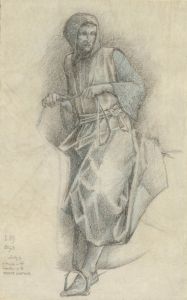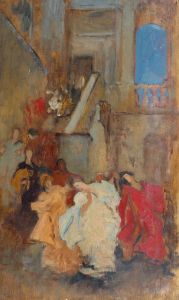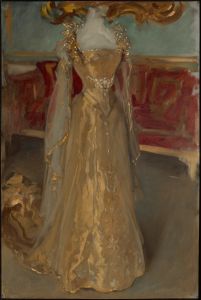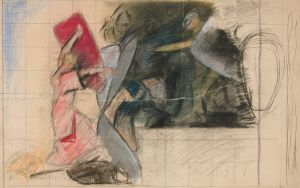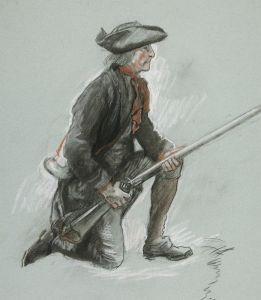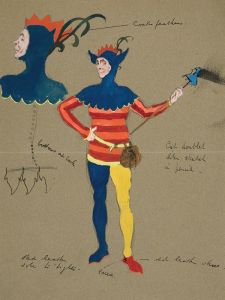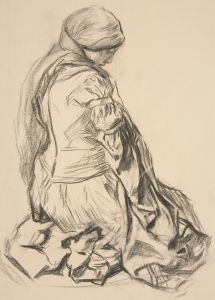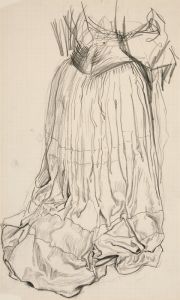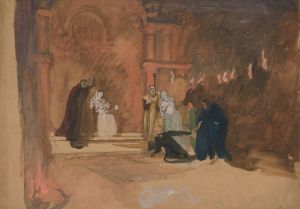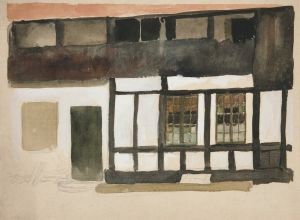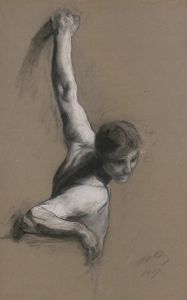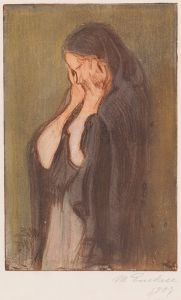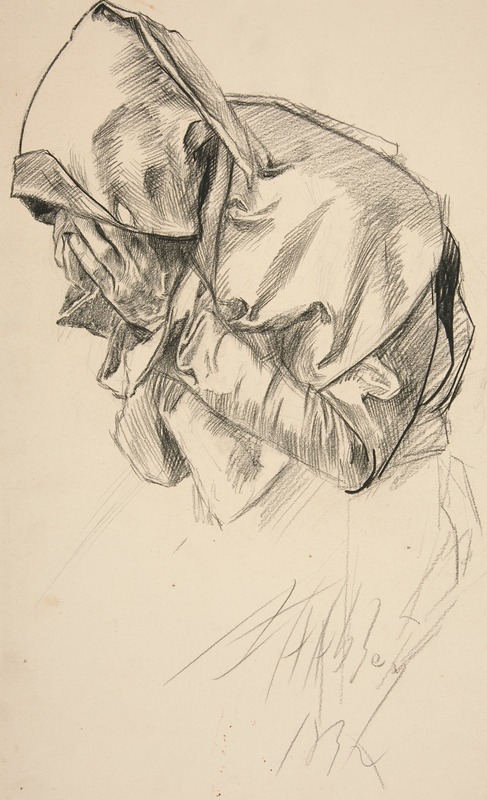
Study of a robed figure, crying, for The Quest of the Holy Grail mural series at Boston Public Library
A hand-painted replica of Edwin Austin Abbey’s masterpiece Study of a robed figure, crying, for The Quest of the Holy Grail mural series at Boston Public Library, meticulously crafted by professional artists to capture the true essence of the original. Each piece is created with museum-quality canvas and rare mineral pigments, carefully painted by experienced artists with delicate brushstrokes and rich, layered colors to perfectly recreate the texture of the original artwork. Unlike machine-printed reproductions, this hand-painted version brings the painting to life, infused with the artist’s emotions and skill in every stroke. Whether for personal collection or home decoration, it instantly elevates the artistic atmosphere of any space.
Edwin Austin Abbey's "Study of a Robed Figure, Crying, for The Quest of the Holy Grail mural series at Boston Public Library" is a preparatory work created as part of Abbey's extensive mural project for the Boston Public Library. Abbey, an American artist known for his illustrations and paintings, was commissioned to create a series of murals for the library in the late 19th century. This particular study is one of many that Abbey produced in preparation for the final murals, which depict scenes from the Arthurian legends, specifically focusing on the quest for the Holy Grail.
The Boston Public Library murals were a significant undertaking for Abbey, who was deeply inspired by medieval themes and the romanticism of the Arthurian legends. The project was commissioned in 1890, and Abbey worked on it for over a decade, with the murals being completed in 1901. The series consists of 15 panels that narrate the legendary quest of King Arthur's knights to find the Holy Grail, a symbol of divine grace and enlightenment.
"Study of a Robed Figure, Crying" reflects Abbey's meticulous approach to his work. As a study, it was likely used to explore composition, form, and emotion, helping Abbey to refine his ideas before executing the final mural. The figure's expression and posture suggest a moment of deep emotion, possibly reflecting the spiritual and moral challenges faced by the knights in their quest. Abbey's attention to detail and his ability to convey emotion through gesture and expression are evident in this study.
Abbey's work on the murals was influenced by his background as an illustrator and his interest in historical and literary subjects. He was part of a broader movement of artists in the late 19th and early 20th centuries who sought to bring narrative and historical themes into public art. The murals at the Boston Public Library are considered one of Abbey's masterpieces and are an important example of American mural painting from this period.
The murals were created using oil on canvas, which was then affixed to the walls of the library. This technique allowed Abbey to work on the panels in his studio before they were installed in the library. The completed murals are located in the library's Abbey Room, a space specifically designed to house this series. The room and its murals are a significant cultural and artistic attraction, drawing visitors who are interested in both the Arthurian legends and the history of American art.
Abbey's contribution to the Boston Public Library is part of a larger tradition of public art in the United States, where artists were commissioned to create works that would educate and inspire the public. His murals not only reflect the artistic trends of his time but also continue to resonate with audiences today, offering a glimpse into the enduring appeal of the Arthurian legends and the quest for the Holy Grail.





